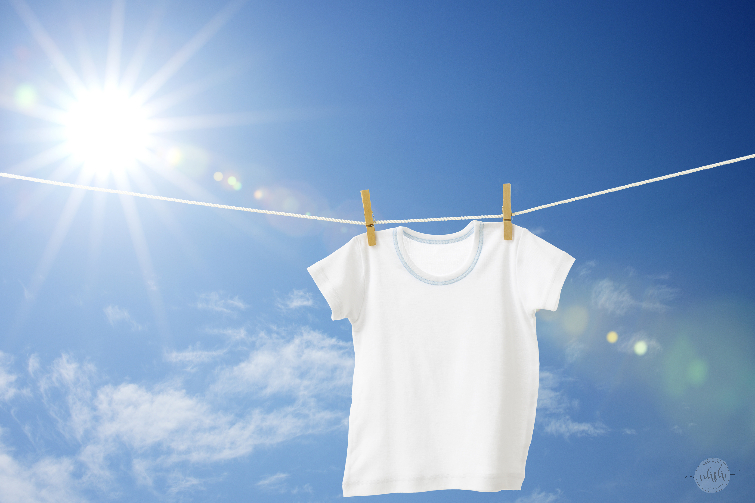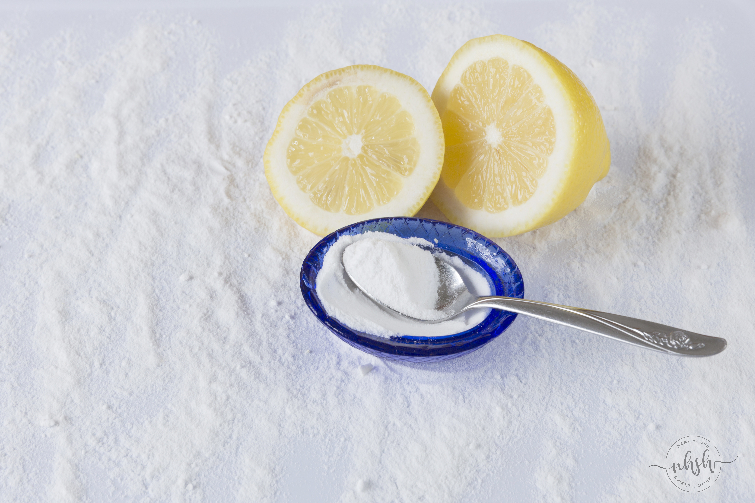How to Keep White Clothes White
Last Sunday, a friend asked me, ‘What do you do to keep your whites white? Mine look gray!’. I answered with another question, which opened up a whole conversation about laundry tips, simplifying laundry, and, of course, how to clean, wash, and bleach white clothes.

I could have given her a short answer. Something like, ‘Just add a small amount of bleach to the laundry load.’ But it is not that simple. So, I asked back: Do you wash white clothes separately? She admitted she didn’t even try!
So here is my personal and straightforward advice on how to wash white clothing, what to do, what not to do, alternative chemical-free bleaching for white clothes, and other helpful tips.
This post contains affiliate links for your convenience. For more information, please read my Affiliates Disclosure.
Wash White Clothing Separately
While many people know the rule of thumb of separating white clothing from darks, I know a few people who don’t bother doing that kind of sorting.
Some think that sorting laundry makes things more complicated. So they take what they think is the ‘easy’ route and just dump loads of wash as they come. This is a big mistake and the cause of why your whites look yellowish or even gray.

The first rule to keep whites white is to separate them from other colors. Although you may be tempted to throw very light colors such as pastels, beige, or gray clothing, it is recommended you wash a load of white clothing separately.
Other light-colored clothing should be washed separately. Basically, you should always have three loads: darks, lights, and whites.
When is it OK to Mix Colors?
This is up to you and your laundry system. But whenever possible, try not to mix whites with any other colors. Here’s when it’s OK to mix whites and light-colored clothing.
- When washing casual and everyday clothing such as sweatpants, fitness clothes, or pajamas.
- Kids’ pajamas or clothing used for playtime or nap time.
- When the white garments do not need bleach, you do not want to add bleach to a load with colored clothing.
Recommended Water Temperature to Wash White Clothes
Cold water penetrates differently into clothing fibers. In many cases, using cold water to clean white clothes is recommended instead of hot water. It might sound counterintuitive, but there are a few reasons why you should use cold water.

- The latest models of washers feature more than one setting where you can mix and match water temperatures with the cycle of your preference. This allows you to use cold water in many cycles.
- Many new detergents formulated with enzymes can work in temperatures as low as 60℉, yielding great results, even when washing whites.
- When you set your load to cold-water washing, your garments are less likely to shrink or fade.
- Use warm water when you are washing regular and casual clothes. These are garments such as shirts and blouses made of cotton or rayon.
- Use hot water when you are washing sheets, towels, and socks. These are usually made of fabrics that can tolerate hot water temperatures. Hot water is good for towels and sheets to remove dirt, buildup, and bacteria.
When in doubt, especially if you are washing delicates, always check the instructions on the garment’s label. You can also find a good rule-of-thumb infographic on laundry and water temperature here.
How to Treat Stains on White Clothes
If you want to see whiter whites, my first suggestion is to act quickly and tackle the stains as soon as they happen. This might be a nuisance for many, but tackling spills and stains sooner than later saves you time, and it might save your garment, too.

Here’s how to treat and clean a stain on a white (or any other color) garment as soon as possible:
- If the stain ‘just happened,’ blot it with a cotton cloth or a paper towel to absorb it.
- Turn the garment inside-out and treat the stain from the back.
- Place the palm of your hand right behind it so the stain doesn’t transfer to the rest of the garment.
- Take a small brush (an old toothbrush works perfectly fine) and dip it in a stain remover. My personal favorite is Clorox 2 for Colors – Stain Remover and Color Brightener.
- Scrub the stain, front and back, and let the product sit on the garment for a few minutes. Usually, no more than 10 minutes. Always read the instructions.
- Rinse the stain and wash the garment as usual.
Another personal suggestion is to avoid the extended use of bleach. With time, bleaching clothes too much can produce yellowing of the fibers. It also destroys the elasticity in many garments, such as socks or the elastic on shorts, pants, and underwear.
In our household, we have used both Tide and Persil, and they are both really good choices. You can learn more about Persil in my post about my personal laundry routine.
Non-Chemical Bleaching Alternatives
Below are a few tricks that our moms and grandmas use as an alternative for cleaning and bleaching white clothes without chemicals.

- The UV rays of the sun help bleach your clothes. After washing white clothes, if possible, hang the garments on a clothesline and let the sun rays do the chemical-free bleaching for you.
- Lemon juice is a potent, natural bleach alternative. Soak a stained garment in a mixture of hot water and the juice of one or two lemons. Let it sit until the water temperature drops. Scrub the stain if necessary, and then wash as usual. Citric acid and lemon essential oil have the same bleaching properties without the chemicals!
- Use borax in lieu of your regular chemical bleach. Borax is a natural element found in nature, non-toxic, and a great water softener. Learn more about Borax and its multiple uses around the house, in my post 5 reasons why I only do laundry once a week.
- Baking soda is also a really good whitening agent. Make a paste with a teaspoon of baking soda and some lemon juice, rub over a stubborn stain. Wash the garment as usual. You can also put 1/2 cup of baking soda for a non-chemical bleaching option.

- Hydrogen Peroxide is a powerful blood stain remover and a good natural disinfectant. Add some hydrogen peroxide to a load in need of both, bleaching and disinfecting!
- White vinegar has many cleaning uses, and bleaching is no exception. Add 1 cup of white cleaning vinegar to your laundry load as a bleach alternative, and to rid your washing machine of musty smells!
- This one will blow your mind! Use 2% cow milk, yes, plain milk for a non-chemical bleaching option. Milk is great for bleaching 100% white cotton garments. Add some milk in a bucket and soak the garment for a couple of hours. Rinse and wash as usual. For an added boost, add vinegar to the laundry load.
Related: 10 Must-Have Ingredients For Homemade Cleaners (Opens in a new browser tab)
Shop for Products Mentioned in this Article
Pin these tricks and save them for later!






